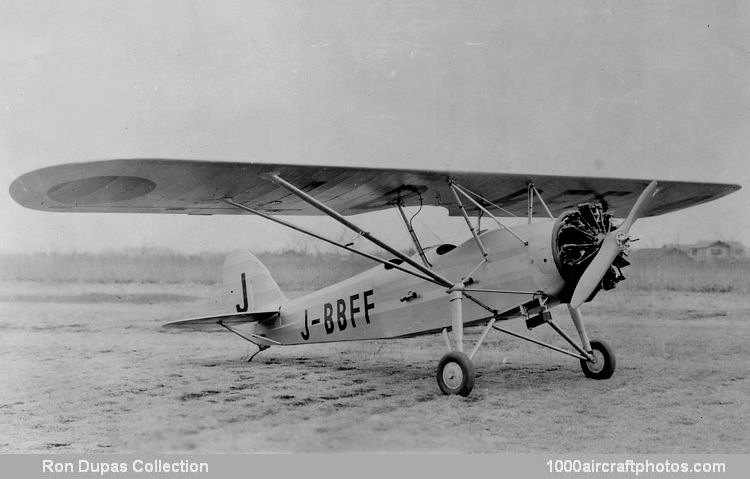05/15/2022. Remarks by Johan Visschedijk: "By 1938, Tachikawa was already heavily involved in production of its very successful Army Type 95-1 and Type 95-3 biplane trainers. As a separate project it developed a parasol-monoplane trainer for use by civil flying schools. This was to be the first monoplane pilot trainer in Japan, and the experience gained by Tachikawa's R-series trainers was incorporated into this new design. It owed much to the Fairchild 22 which had been imported by Okura Shoji (Okura & Co Ltd, a trading company) from the United States and assembled by Tachikawa before the name was changed from Ishikawajima. This new aircraft was the R-38, a major jump in R-series numbering, the 38 referring to 1938, the year of its design development. Supervising the project was Moriyuki Nakagawa, and chief designer was Ryokichi Endo.
The aircraft made its first flight on February 22, 1939, carrying the registration J-BBFE, although the photoshows that at some time it had J-BBFF on the fuselage. The 160 hp Jimpu 6 seven-cylinder air-cooled radial engine, driving a two-bladed wooden propeller, was identical to that being used in the Army Type 95-3, but the R-38 was lighter in weight and therefore superior to the Type 95-3 in speed, climb and maneuverability. When evaluated by the Army Air Technical Research Institute and the Aviation Bureau Central Pilot Training School, they agreed that the R-38 was superior. But by that time the Army had quantities of the Type 95-1 and 95-3 trainers and concluded that there was no requirement for the R-38.
Earlier, in September 1937, Tachikawa had merged with Kosokudo Kikan KK (High Speed Engine Co. Ltd.) and had planned to develop and manufacture the 120 hp KO-4 four-cylinder air-cooled inverted in-line engine to be manufactured by Kosokudo Kikan KK. There were years of delay in developing and producing the first of these engines but eventually one was available and a 130 hp Kosoku KO-4 four-cylinder air-cooled inverted in-line engine, driving a two-bladed wooden propeller, was installed in the second prototype of the R-38, greatly enhancing the aircraft's lines. Known as the R-38 Kai Trainer, and registered J-ALTB, it made its first flight in July 1941. As a result of the tighter control that the military was gaining over aircraft and engine manufacturing, the Army directed that the R-38 Kai would not be produced, and manufacture of the KO engine was to be suspended because there was no military application for it.
With the Army's rejection of this aircraft, a market failed to develop, so this one example was experimentally used by the Aviation Bureau's Matsudo Central Pilot Training School."
